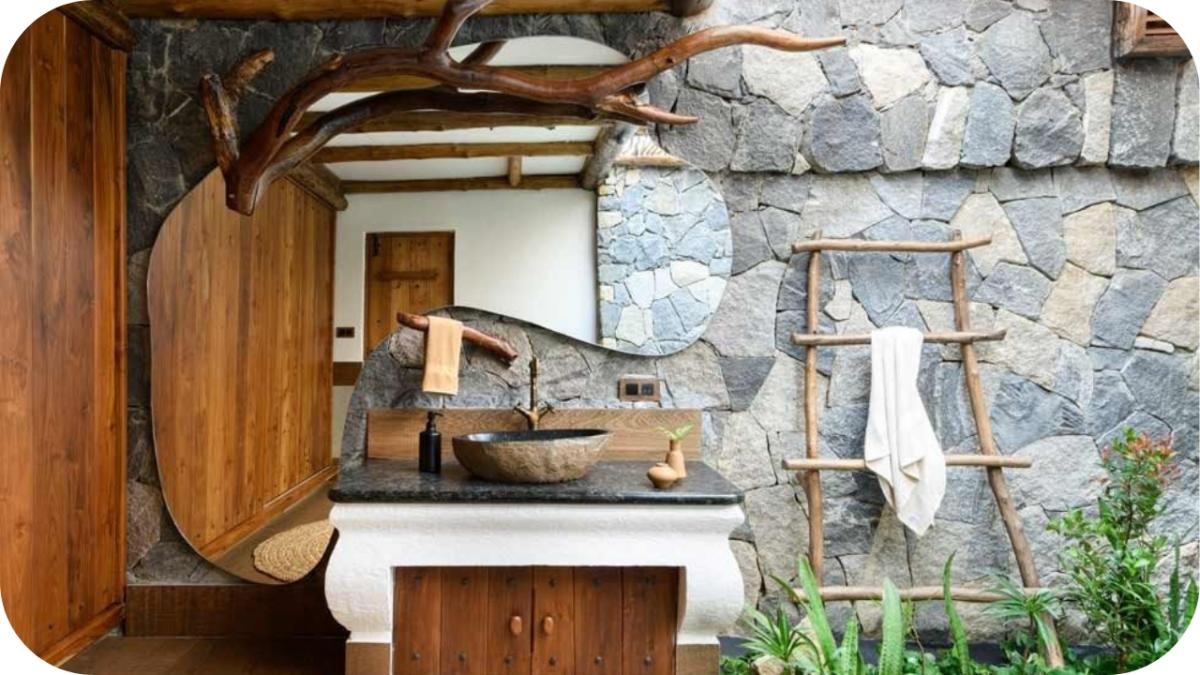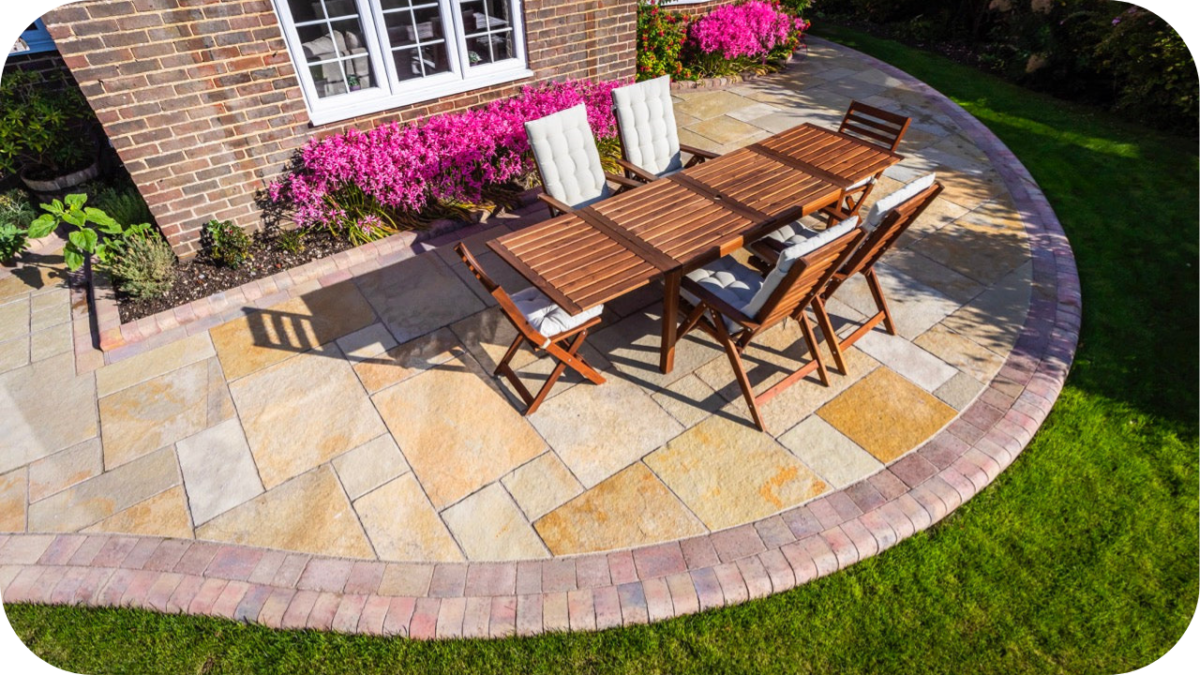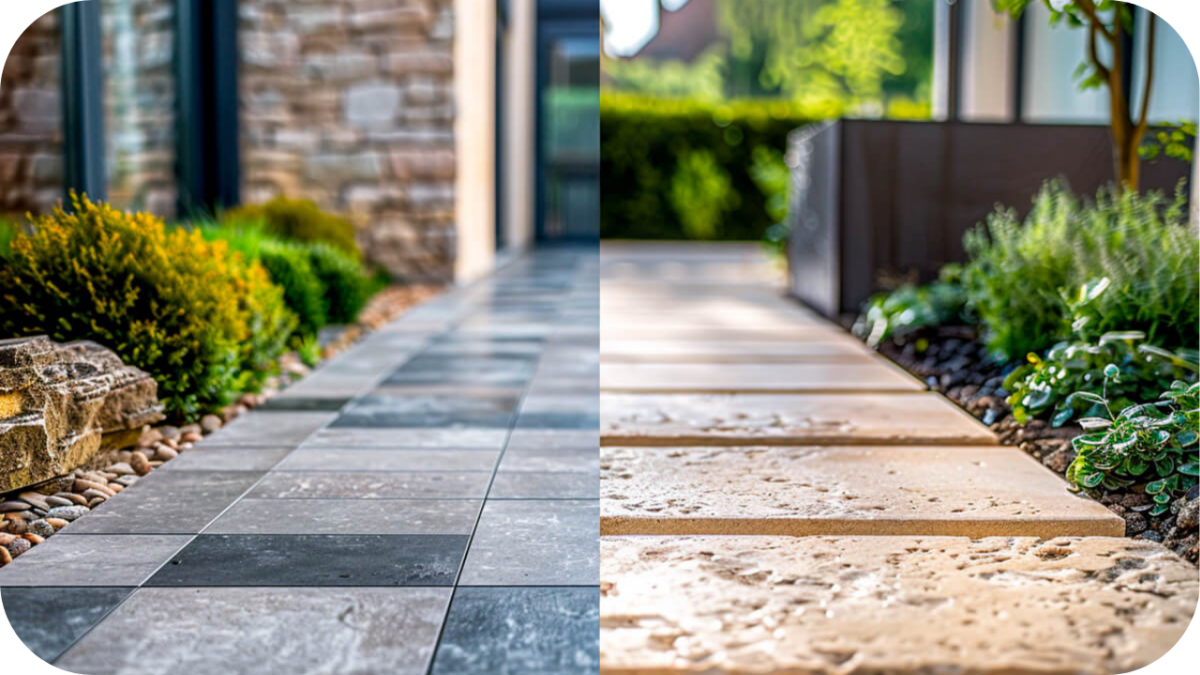Combining Natural Stone with Wood for a Modern Look
Imagine a living space where the raw, earthy beauty of wood meets the sleek elegance of natural stone. This powerful combination creates a perfect balance of warmth and sophistication, adding timeless charm to any modern interior.
Whether you’re aiming for a minimalist, industrial, or rustic design, stone and wood seamlessly complement one another, elevating your home with rich textures and contrasting tones.
This guide will show you how to integrate these two materials, transforming your interiors into stylish, functional spaces.
Why Combine Natural Stone and Wood?
Combining natural stone and wood creates a striking, balanced aesthetic. Here’s why this versatile pairing is a popular choice for modern interior design.
- Enhances Aesthetic Appeal: The contrast between stone’s cool texture and wood’s warmth adds depth, creating a dynamic look that elevates any space with timeless elegance.
- Achieves a Perfect Balance: Stone’s bold structure pairs seamlessly with wood’s softness, providing a harmonious atmosphere that balances sophistication and comfort in modern living spaces.
- Promotes Sustainability: When responsibly sourced, both stone and wood are eco-friendly, offering durability and minimal environmental impact, making this combination a sustainable design choice.
- Increases Versatility: Whether for minimalist kitchens, rustic living rooms, or industrial bathrooms, this pairing suits a wide range of styles, offering timeless appeal and adaptability.
- Adds Value to Your Home: Combining stone and wood increases the beauty and functionality of your space, making it a valuable design choice that enhances your home’s market appeal.
- Provides Durability and Low Maintenance: Both materials are durable and easy to maintain, ensuring your interiors stay stylish and functional for years with minimal effort.
Best Natural Stones to Pair with Wood
A lasting, stylish solution for your home interiors. Here are the best natural stones to pair with wood, creating a perfect blend of elegance and warmth for your space.
1. Granite
Granite is a durable, sleek stone that works beautifully in wall applications. Its polished finish and wide range of colours provide a modern aesthetic, while its strength ensures it complements both rustic and contemporary wood elements.
2. Limestone
Limestone is a soft, earthy-toned stone that enhances wall applications with its warm, natural texture. Its subtle elegance provides a calming atmosphere, while its versatile colours make it a perfect match for wood elements in modern spaces.
3. Travertine
Travertine is a rustic, earthy stone ideal for wall applications. Its unique texture and warm hues bring a timeless appeal, blending seamlessly with wood elements to create a natural, elegant atmosphere in any space.
4. Sandstone
Sandstone is a textured, warm-toned stone that works beautifully in wall applications. Its natural, earthy hues provide a rustic charm, while its sturdy nature complements wood, adding both character and warmth to modern interiors.
5. Quartzite
Quartzite is a durable, sleek stone that works beautifully in wall applications. Its crystalline texture and range of colours provide a sophisticated aesthetic, while its strength ensures it complements both rustic and contemporary wood elements.
Popular Ways to Combine Stone and Wood in Modern Interiors
Looking to enhance your space? Here are the best ways to combine natural stone with wood, creating stylish, balanced interiors that exude warmth and elegance.
1. Feature Walls
Combining stone and wood in feature walls creates a striking focal point in any room. The stone’s texture and wood’s warmth balance each other, enhancing the room’s overall aesthetic and adding depth and character.
2. Stone Countertops with Wooden Cabinets
Pairing stone countertops with wooden cabinets brings elegance and warmth to kitchens and bathrooms. The contrast between the sleek, polished stone and the natural texture of wood creates a sophisticated and timeless design.
3. Wooden Floors with Stone Accents
Balancing the warmth of wooden floors with stone accents adds texture and interest to your space. Use stone tiles or accent walls to enhance the natural beauty of wooden flooring, creating a harmonious, inviting environment.
4. Wooden Furniture with Stone Backdrops
Using stone as a backdrop for wooden furniture creates a striking, upscale look. Whether in living rooms or dining areas, this combination adds contrast, highlighting the beauty of both materials and creating a sophisticated design.
5. Fireplaces
Pairing stone fireplace surrounds with wooden mantels creates a cosy yet elegant focal point in living rooms or bedrooms. The combination of stone’s rugged texture and wood’s warmth adds charm and character to any space.
How to Create the Right Balance Between Stone and Wood
Achieving the perfect blend of stone and wood elevates your space. Here are practical tips to seamlessly combine these materials and create balanced, modern interiors.
1. Match the Tones of Stone and Wood
To achieve balance, ensure the tones of stone and wood complement each other. Lighter tones create an airy vibe, while deeper tones add sophistication, enhancing the overall harmony of the space.
2. Pair Textures for Contrast
Balance the smoothness of polished stone with the natural texture of wood. This contrast brings visual interest and ensures a cohesive look, combining the structure of stone with the organic softness of wood.
3. Control Proportions Between Stone and Wood
Maintain balance by controlling the proportions of stone and wood. Let one material dominate while using the other as an accent, ensuring neither element overpowers the other for a visually appealing result.
4. Integrate Stone and Wood Subtly into Existing Spaces
Start with subtle changes when adding stone and wood to existing spaces. Introduce stone accents or feature walls that complement existing wooden features, ensuring a seamless integration that maintains the room’s existing flow.
5. Consider Functionality Along with Aesthetics
When combining stone and wood, think beyond aesthetics. Select materials that offer durability for high-traffic areas like kitchens and living rooms, where both beauty and practicality are essential for long-term use.
4. Start with Accent Pieces
Begin with smaller accent pieces like tables, shelves, or decorative elements. This allows you to test the combination of stone and wood in your space before committing to larger, more permanent installations such as feature walls or countertops.
6. Mix Wood Finishes for Depth
Experiment with different wood finishes to add dimension and depth to your design. Combining polished wood with raw, untreated stone creates a modern eclectic look, while consistent wood finishes provide cohesion and visual balance.
7. Embrace Natural Variations
Celebrate the natural variations in stone and wood. Each material is unique, with distinct colours and textures that add character and authenticity to your space, giving it a grounded, organic feel.
Trends in Stone and Wood Combinations
Looking to stay on trend? These exciting stone and wood combinations are shaping modern interiors, bringing sustainable, stylish, and timeless designs to homes worldwide.
- Eco-friendly Designs: Sustainable sourcing of both stone and wood is on the rise. Using reclaimed wood and responsibly mined stone contributes to eco-conscious home designs that are both stylish and environmentally friendly.
- Statement Pieces: Large stone panels paired with sleek wooden furniture or flooring are becoming a bold design choice. These statement pieces create focal points in rooms, adding sophistication and visual impact.
- Mixing Styles: Combining different wood finishes with raw, untreated stone creates a modern, eclectic design. The contrast between polished wood and natural stone adds depth and character, resulting in a unique and personalised interior.
- Natural Materials in Modern Homes: The growing demand for natural materials in home design embraces stone and wood’s organic appeal. These materials create a calming, grounded atmosphere, making homes feel more connected to nature.
- Layered Textures: Combining multiple textures, such as smooth stone and rough-hewn wood, creates depth and interest. This layering technique adds complexity and balance, enhancing the overall design of modern spaces.
- Open Concept Integration: Stone and wood combinations work seamlessly in open-plan spaces. Using these materials in kitchens, living areas, and dining rooms creates continuity and flow, making large spaces feel cohesive and stylish.
Conclusion
Combining natural stone with wood creates a timeless, modern look that adds both warmth and elegance to any interior.
Whether you prefer bold contrasts or subtle harmony, this pairing enhances the overall aesthetic and functionality of your space. From sleek contemporary designs to rustic charm, stone and wood effortlessly complement each other.
Ready to transform your home? Visit Splendour in Stone for our premium selection of natural stone and start integrating these beautiful materials into your design for a stylish, durable home.





